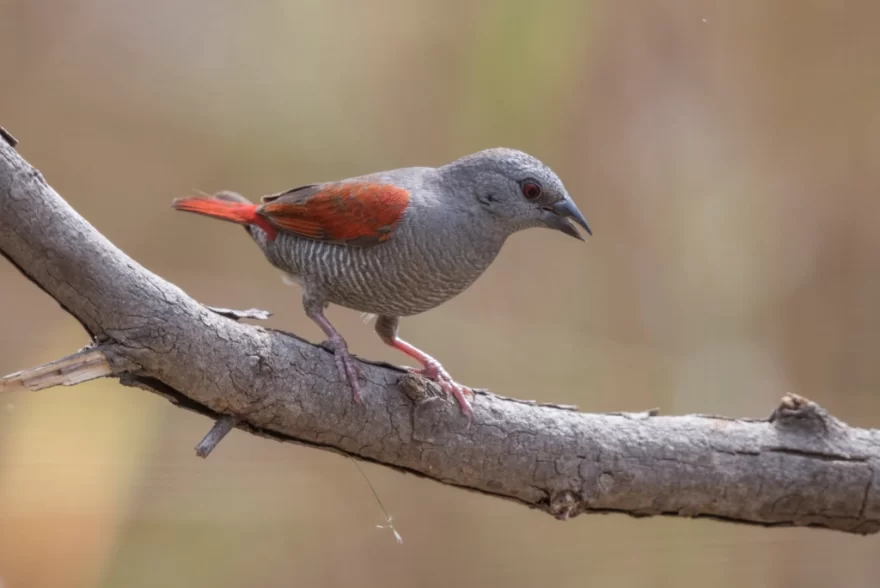The red-winged pytilia, or aurora finch as it’s known in Australian aviculture, is an estrildid finch found in the savannas and woodlands of central Africa. They are somewhat rate in Australian aviculture and are not considered to be suitable for finch-keeping beginners.

Housing & Compatibility
Aurora finches can be housed as single pairs alone or as part of a mixed finch collection. Do not house more than one pair together, as sometimes the males will fight—especially close to the breeding season. They are not as aggressive as the closely-related melba finch.
Aurora finches prefer a large planted aviary that provides plenty of foraging areas. They will often mate and nest in shrubs or thickets of brush to close to ground.
Aurora finches will readily hybridize with other species in the pytilia family, so they must not be housed with the green-winged (melba) pytilia or the yellow-winged pytilia.
Diet & Feeding
A quality finch seed mix including canary seed and various millets forms the basis of the aurora finch’s diet. Sprouting seed increases its nutritional value and is an effective way to improve your bird’s health and breeding performance. Freshly grown green seed heads should also be offered frequently.
Some leafy greens should be provided throughout the year. Although not as keen on greens as many other finch species, they will still incorporate a small amount in their diet, especially if they see other birds eating them. Kale, bok choy, endive, and silverbeet are the most nutritious and are very easy to grow. Spinach can also be given, but only sparingly as it can contribute to calcium deficiency.
Live food is an important component of the aurora finch’s diet and should be provided regularly during the breeding season. Outside of the breeding season, supplemental feeding with livefood is all that’s required.
Mealworms, maggots, termites, and small crickets will be consumed readily. Commercial soft finch food mixes can also be provided for an added nutrient boost, which is especially useful when breeding.
Do not feed anything from the list of forbidden foods.
Breeding Aurora Finches
Although they’re able to breed year-round if the conditions are right, the breeding results are achieved in spring through to late summer. The hen bird should be at least 12 months old, and better breeding results are usually achieved in her second year of breeding.
Aurora finches demand privacy when breeding and do not tolerate nest inspections. In a mixed aviary situation, the aviary should be large enough that other birds do not need to enter the proximity of their nest.
Aurora finches construct a dome-shaped nest in a half-open nesting box, tree or shrub. The nest is built from fine strands of dry grass and lined with feathers.
Do not house with any of the other pytilia species, as they may produce hybrids.
They typically lay 3-5 eggs in each clutch, which are incubated by both parents for approximately two weeks. Young birds fledge the nest at three weeks of age and are usually independent after a further three weeks. The young birds will resemble the hen, so it’s best to put leg rings on the parent birds.
Young birds should be separated from their parents when they reach independence to prevent aggression.
Sexing
Can be visually sexed. Females have less bright red colouring and lighter grey plumage.
Mutations
No mutations have been established in Australia.
Health & Lifespan
The Aurora finch spends a lot of time foraging at ground level, and has a diet is high in live food, making them especially vulnerable to parasite infection. A strict worming and parasite control regime should be implemented to ensure their long-term health. We recommend Moxidectin Plus.
Healthy birds can be expected to live for approximately 7-8 years of age.